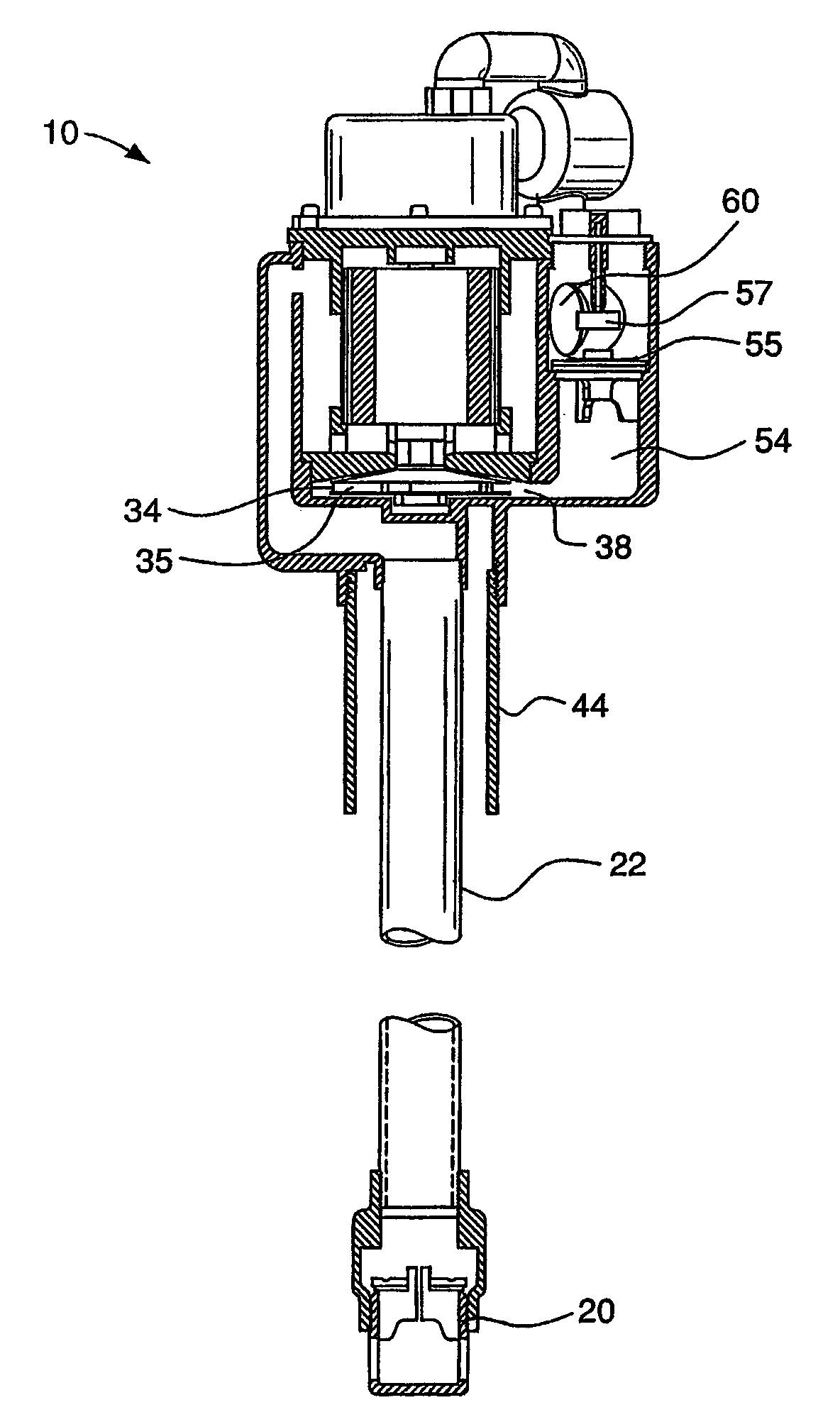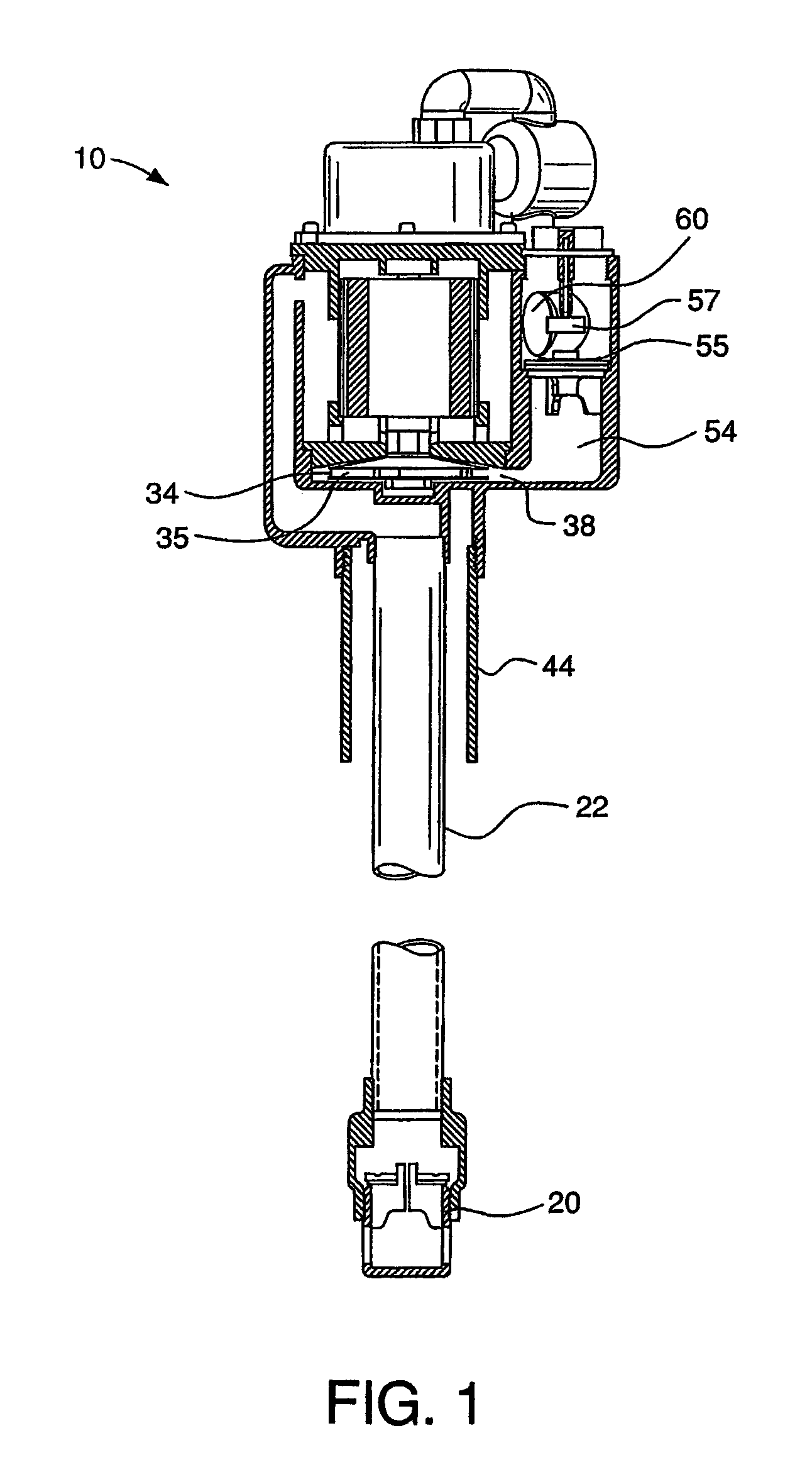Fuel transfer pump
a fuel transfer pump and fluid pump technology, applied in the direction of pump, positive displacement liquid engine, liquid fuel engine, etc., can solve the problems of increased risk of environmental danger, increased piping, inconvenient and dangerous area, etc., to save money, less inventory, and more flow
- Summary
- Abstract
- Description
- Claims
- Application Information
AI Technical Summary
Benefits of technology
Problems solved by technology
Method used
Image
Examples
Embodiment Construction
[0045]FIGS. 1 and 2 show a cross section through the fuel transfer pump 10 and storage container 12. FIG. 3 shows a top view of the fuel transfer pump. FIG. 4 shoes a perspective view of the fuel transfer pump, and FIGS. 5 and 6 show partial cross sections through the fuel transfer pump.
[0046]The fuel transfer pump 10 has a stand pipe 44, that is commonly a 4″ diameter pipe. The stand pipe 44 is connected to the bung 14 of the storage container in a leak resistant fit, and the stand pipe 44 supports the weight of the fuel transfer pump 10. A narrower diameter riser pipe / column 22 and a return pipe 42 are contained within the stand pipe 44 and extend into the tank 12. The end of the riser pipe / column 22 has an intake 19 ideally submerged within the combustible liquid or fuel 16 in the storage container 12. A foot valve 20 at the end of the riser pipe serves as a kind of check valve. The foot valve 20 prevents pipe flow in the direction of the tank 12, and thus insures that the fuel t...
PUM
 Login to View More
Login to View More Abstract
Description
Claims
Application Information
 Login to View More
Login to View More - R&D
- Intellectual Property
- Life Sciences
- Materials
- Tech Scout
- Unparalleled Data Quality
- Higher Quality Content
- 60% Fewer Hallucinations
Browse by: Latest US Patents, China's latest patents, Technical Efficacy Thesaurus, Application Domain, Technology Topic, Popular Technical Reports.
© 2025 PatSnap. All rights reserved.Legal|Privacy policy|Modern Slavery Act Transparency Statement|Sitemap|About US| Contact US: help@patsnap.com



